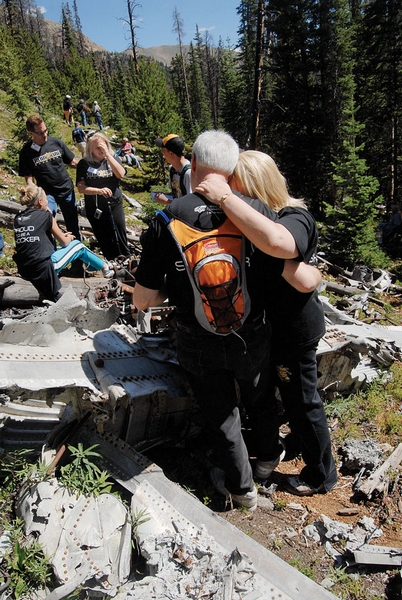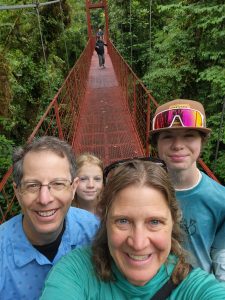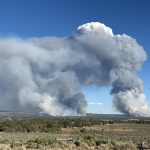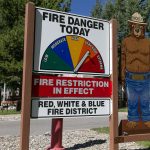Wichita State plane crash killing 31 in 1970 revisited Saturday
summit daily news

ALL |
CLEAR CREEK COUNTY – Metal and scorched earth line an opening in the forest near Loveland Pass, where an airplane carrying Wichita State University football players crashed 40 years ago.
The head coach, boosters, team staff and flight crew members were among the 31 of 40 people to die.
“It never goes away,” said John Yeros, who was a wide receiver and underclassman traveling on a separate plane.
More than 40 friends and family on Saturday morning hiked to the site where the plane went down Oct. 2, 1970. They held a remembrance ceremony and placed sunflowers on the debris.
Carl Krueger died in the crash at age 19. He was a defensive lineman for the WSU Shockers.
Two of his sisters, Mary Ann Krueger and Vicki Anzalone, were among family members to visit the crash site Saturday. They placed pins and trinkets on twisted, rusted metal that appeared to be the heart of the plane.
“I wish I could find him here,” Mary Ann Krueger said. It was her first time to visit the site.
The “gold” and “black” airplanes named for team colors were planned to land in Logan, Utah for a game against Utah State University.
The “gold” plane, carrying the team’s first-string players crashed on Mount Trelease – about 1,600 feet below the summit – east of Loveland Pass.
“They just kind of flew into an impossible situation,” said Mike Kennedy who’s called WSU football, basketball and baseball games on TV and radio since the mid-1970s.
The plane was loaded down with people and equipment. After refueling in Denver, the two planes took separate routes to Utah: One traveled northward over mostly flat lands and the other diverted toward the mountains.
“Someone heard this pilot tell our pilot he was going to take the scenic route,” Yeros said Saturday while overlooking the debris, which was spread about 100 yards.
The “gold” plane was traveling up the Interstate 70 corridor when people from Georgetown called the sheriff’s office to report that it was flying dangerously low.
“It just didn’t have enough power,” said Loveland Ski Patrol director Ron Kidder, who’s been with the ski area for 43 years.
The plane became boxed in, banked and hit the mountainside.
Kidder said the plume of smoke could be seen rising from the trees.
“It was big,” he said. “It was a hot fire.”
Kidder said only one body was recovered; the rest were incinerated in the fire that erupted moments after the crash.
He said the Eisenhower Tunnel (completed in 1973) was under construction, and many of the crash site’s first responders were workers who’d climbed up from there.
The co-pilot and eight players survived; others lived through the crash but died after they were rescued.
Yeros said the survivors were mostly players who weren’t wearing seatbelts, and the seats in front of them were reclined. When everything crashed toward the cockpit, they were thrust to the top of the heap.
“Everything dislodged and went to the front,” he said. “People were crushed.”
Several survivors exited through a hole in the back of the plane. Some people were still alive in the plane when it erupted in flames.
Three hours later, the “black” plane landed in Logan.
Yeros looked out the plane window to see several cars outside. The offensive coordinator was called off the plane; he soon returned and conducted a roll call – which would later help determine who was killed in the other airplane.
“I was first told there were at least 25 survivors,” Yeros said.
He and his teammates were taken to a hotel, where they took turns calling their parents. Yeros recalls his father of Aurora telling him there was “no way” 25 people survived the crash at Loveland Pass.
“That night, they took us to a church and gave us the list of survivors,” he said. “That’s how we found out.”
Mary Ann Krueger was riding home from school at age 15 when she heard the radio report.
She battled tears Saturday as she spoke of her brother’s affection for the midwest, music and motorcycles. They grew up in Illinois, where Carl would enter the accordion contest at the state fair.
A park in Hickory Hills, Ill. was named in Carl Krueger’s honor.
Yeros said the football team was 0-3 going into the Utah State game. After the crash, the NCAA made an exception to the rules to allow freshmen to take the field. The team played six more games and lost them all.
“It was getting back on the field and finishing what we started,” Yeros said, adding that teammates who died in the crash likely would’ve wanted the Shockers to play out the season.
Memorials have been placed on the university campus and at I-70 westbound mile-marker 217.
The school dropped football in the mid-1980s because it was losing money, but alumni on Saturday said an effort is under way today to get it back.
Saturday’s visit, planned by the WSU Alumni Association, even included a couple of the crash victims’ grandchildren. Carolyn Harner, an alumnus from Frisco, said people flew from as far as Atlanta and Chicago to ride in vans from Wichita, Kansas to the site.
Everyone met on a road north of Interstate 70 before taking a steep hike up a trail that was initially cut to extract evidence from the crash scene.
After exploring the site, the group gathered for a brief ceremony.
The speech university President Clark Ahlberg gave on Oct. 5, 1970 regarding the crash was read, there was a roll call of the flight’s passengers, and people placed sunflowers across the site.
“This will keep us together for the rest of our lives, and it should,” said Dave Dahl, alumnus from the class of 1971.
SDN reporter Robert Allen can be contacted at (970) 668-4628 or rallen@summitdaily.com.

Support Local Journalism

Support Local Journalism
As a Summit Daily News reader, you make our work possible.
Summit Daily is embarking on a multiyear project to digitize its archives going back to 1989 and make them available to the public in partnership with the Colorado Historic Newspapers Collection. The full project is expected to cost about $165,000. All donations made in 2023 will go directly toward this project.
Every contribution, no matter the size, will make a difference.









